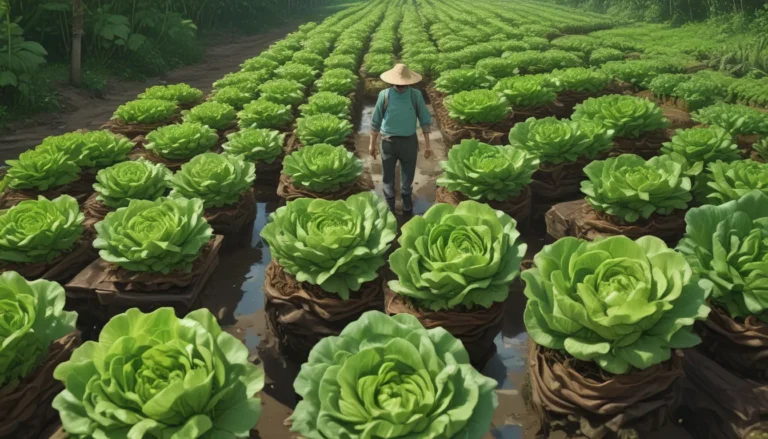Comprehensive Guide to Identifying and Managing Common Brussels Sprout Diseases

Brussels sprouts may not be as flashy as summer veggies, but there’s something truly special about these cool-season delights. Whether you’re enjoying them fresh off the stalk or cooked to perfection, there’s nothing quite like a delicious brussels sprout dish.
However, nothing is more disheartening than watching your beloved brussels sprouts succumb to disease before they reach your plate. In this guide, we’ll cover the best practices to avoid diseases and identify and manage 11 common diseases that can plague your brussels sprouts.
What You’ll Learn
- Best Practices to Avoid Diseases
- 11 Common Diseases in Brussels Sprouts:
- Alternaria Leaf Spot
- Bacterial Leaf Spot
- Bacterial Soft Rot
- Black Rot
- Clubroot
- Damping Off
- Downy Mildew
- Powdery Mildew
- Ring Spot
- Verticillium Wilt
- White Rust
Best Practices to Avoid Diseases
Good garden hygiene plays a crucial role in preventing most of the common diseases that can afflict your brussels sprouts. Here are some essential best practices to keep your veggies healthy:
- Rotate Your Crops: Plant something different in the spot where your brussels sprouts were growing for the following two years. Avoid planting other Brassica genus plants in the same location.
- Keep Your Garden Weed-Free: Eliminate weeds that belong to the Brassica genus, as they can harbor fungi and bacteria that infect brussels sprouts.
- Water at the Soil Level: Avoid watering the foliage or heads of plants. Morning watering is ideal to allow moisture to dry off during the day.
11 Common Diseases in Brussels Sprouts
1. Alternaria Leaf Spot
Alternaria leaf spot, or black spot, is caused by fungi and presents as little black spots that rapidly expand and merge on the foliage. While primarily a cosmetic issue, plant fungicides can help control it.
2. Bacterial Leaf Spot
Caused by Pseudomonas syringae, bacterial leaf spot manifests as black or purple spots on leaves, usually with a yellow halo. This bacterium thrives in cool, moist conditions, and prevention measures include watering at the soil level and using certified disease-free seeds.
3. Bacterial Soft Rot
Bacterial soft rot, caused by various bacteria, leads to rotting of veggies and fruits. No cure exists, so prevention is key through proper wound care and avoiding contaminated tools.
4. Black Rot
Black rot, caused by Xanthomonas campestris, results in root and stem rot, eventually leading to plant death. Prevention strategies include using disease-free seeds and maintaining proper hygiene.
5. Clubroot
Clubroot, caused by Plasmodiophora brassicae, distorts roots and stunts plant growth. Prevention involves raising soil pH and implementing rigorous garden hygiene practices.
6. Damping Off
Damping off disease can affect seedlings, causing weak growth or death. Preventative measures include using disease-free seeds and maintaining optimal growing conditions.
7. Downy Mildew
Downy mildew, caused by Hyaloperonospora parasitica, presents as yellow or brown spots on leaves and can spread rapidly. Copper fungicides and neem oil can help manage the disease.
8. Powdery Mildew
Powdery mildew, caused by Erysiphe cruciferarum, thrives in warm, dry conditions. Resistant cultivars and preventative measures such as Bacillus subtilis treatments can help control the disease.
9. Ring Spot
Ring spot disease, caused by Mycosphaerella brassicicola, leads to gray spots on foliage. Rotating crops and using copper fungicides are critical in disease management.
10. Verticillium Wilt
Verticillium wilt, caused by Verticillium fungi, can result in plant death. Planting resistant varieties and crop rotation are crucial in preventing this disease’s spread.
11. White Rust
White rust, caused by Albugo candida, leads to waxy white bumps on leaf undersides. Proper hygiene practices and preventative treatments can help manage the disease.
Don’t let diseases destroy your favorite dishes! By following preventative measures and implementing targeted treatments, you can safeguard your brussels sprouts from common diseases. Share your success stories with us in the comments, and continue your brussels sprouts journey with our additional guides on pests, harvest tips, and winter growing strategies.
Remember, a healthy brussels sprout plant is a happy plant!





